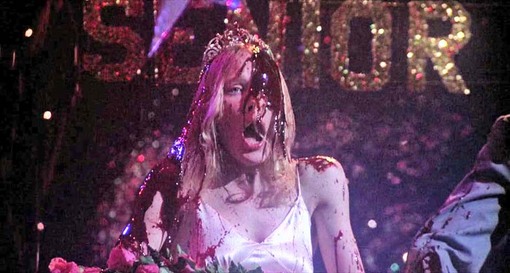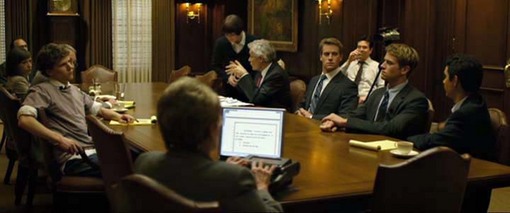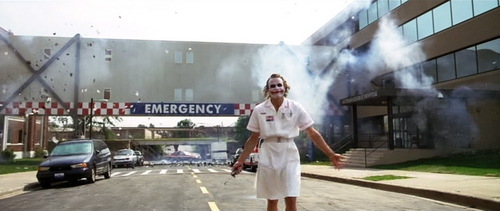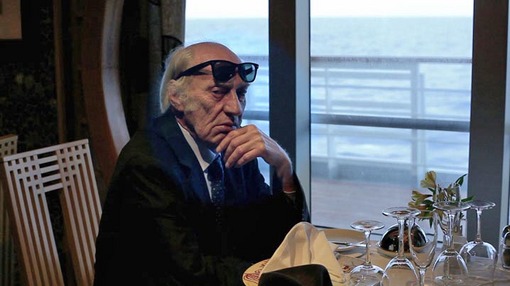Altman: Life beyond the frame
“Nashville” 25th reunion. (photo by Jim Emerson)
When the doctor says you’re through
Keep a’goin!
Why, he’s a human just like you —
Keep a’goin!
— Haven Hamilton (Henry Gibson) in “Nashville”
View image 24 of your favorite stars.
Give me a Leonard Cohen afterworld
so I can sigh eternally
— Kurt Cobain, “Pennyroyal Tea”
It’s true that all the men you knew were dealers
who said that they were through with dealing
every time you gave them shelter
— Leonard Cohen, opening lyrics for “McCabe & Mrs. Miller”
View image “Nashville” 25th reunion. Note gigantic Oscar at right; Altman got his own, regular-sized one six years later. (photo by Jim Emerson)
“However, the cortex, which is dwarfed in most species by other brain areas, makes up a whopping 80 percent of the human brain. Compared with other animals, our huge cortex also has many more regions specialized for particular functions, such as associating words with objects or forming relationships and reflecting on them. The cortex is what makes us human.”
— John J. Ratley, M.D., “A User’s Guide to the Brain: Perception, Attention, and the Four Theaters of the Brain”
I’m not sure what, if anything, meaningfully connects these fragments to the passing of Robert Altman — or his films, as alive now as they ever were — but they were all things I encountered during a day spent thinking about Altman and, to my surprise, not wanting to speak out loud about him to anyone. I talked to my mother on the phone. She asked hesitantly, “Have you heard any news today?” “Yeah,” I said, and changed the subject. What can I say that isn’t trivial? (Rhetorical question, please.)
In this state of grief, nothing I’m writing or thinking about Altman is adequate, or even makes much sense, in large part because a whole moviegoing lifetime of engagement with his movies (beginning at age 15) has so profoundly shaped who I am and how I experience the world. Like hundreds, thousands (millions?) of cinephiles and cinephiliacs, I found life (and, paradoxically, shelter) in Robert Altman’s movies. “Nashville” is my church, to which I return again and again for joy, insight, inspiration and sustenance. (I haven’t written about it for years, but I also know that I’m almost never not writing about “Nashville.”)
To this day, I am in some deep but irrational sense convinced that the characters in “Nashville” (even though I know they’re played by 24 of my very favorite stars!) continue to exist outside the parameters of the movie itself. I’ve met and interviewed, for example, Ned Beatty, but there’s Ned Beatty the actor and then there’s Delbert Reese, who is someone else entirely. Delbert exists, imaginatively independent of the great actor (one of my all-time favorites) who inhabited him in “Nashville.” (This is most unlike the other most-influential movie in my life, Roman Polanski’s “Chinatown,” made just the year before “Nashville,” which is as “closed” a film as “Nashville” is “open.” “Chinatown” ends so definitively that, “Two Jakes” aside, any life beyond the final frame is unthinkable.)
Right now I just want to share another fantastic memory: In 2000, I heard there was going to be a 25th anniversary reunion screening of “Nashville” at the Academy of Motion Picture Arts and Sciences’ Samuel Goldwyn Theater in Beverly Hills. I’d moved back to Seattle by this time, but I bought tickets the moment they became available (for five bucks apiece) and went to LA for the event: My favorite movie, in a pristine print, in one of the finest movie theaters in the world, with most of those 24 favorite stars in attendance. It was… transplendent (as a Shelley Duvall character once said). I’ll post an update with IDs later, but for now, see if you can identify the people onstage (taken with a now-primitive, but still beloved, Canon Digital Elph)
Pauline Kael’s famous, ebullient review of “Nashville” here reminds us how exciting and innovative the movie was in 1975.
Principal population of “Nashville” after the jump:








